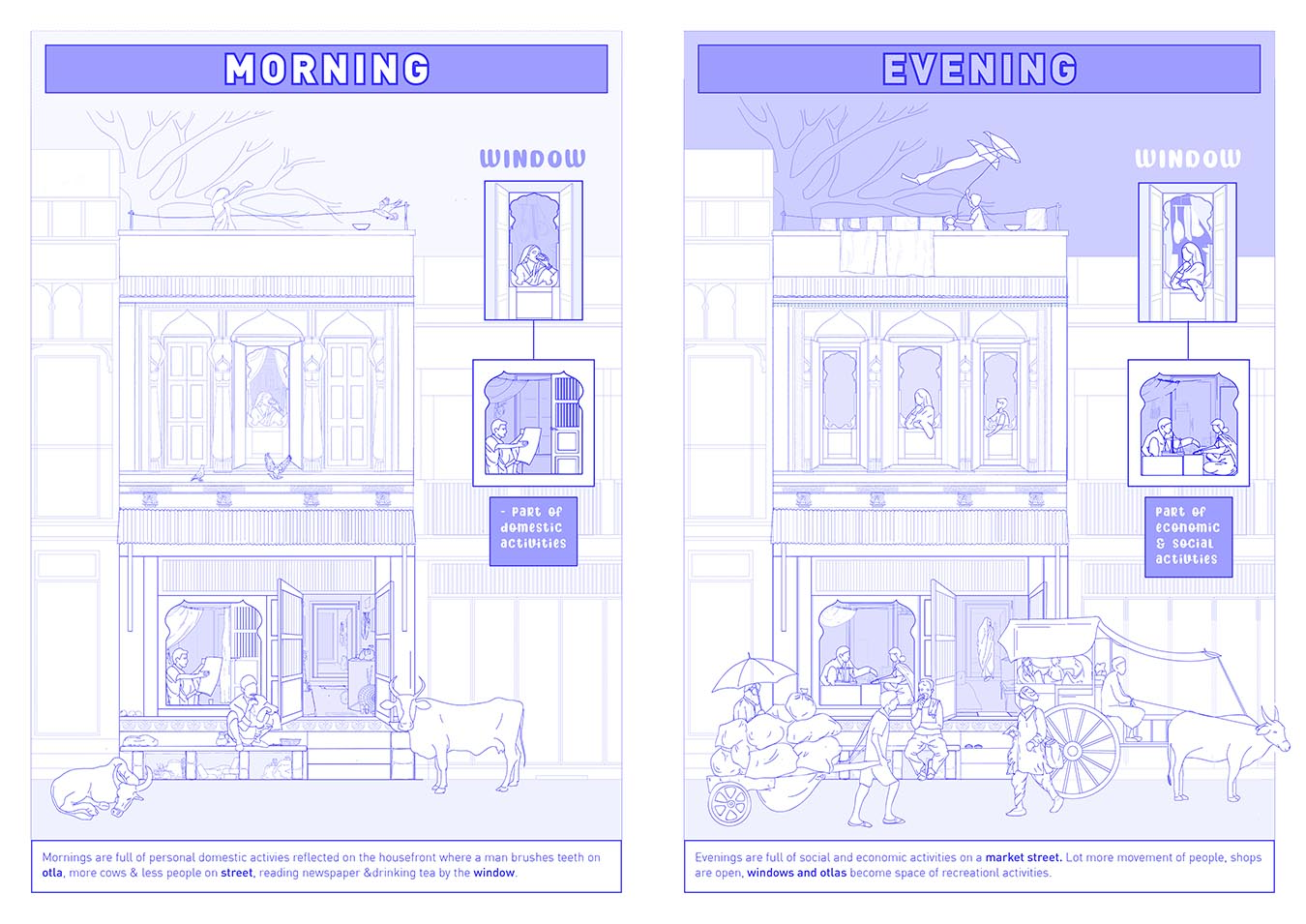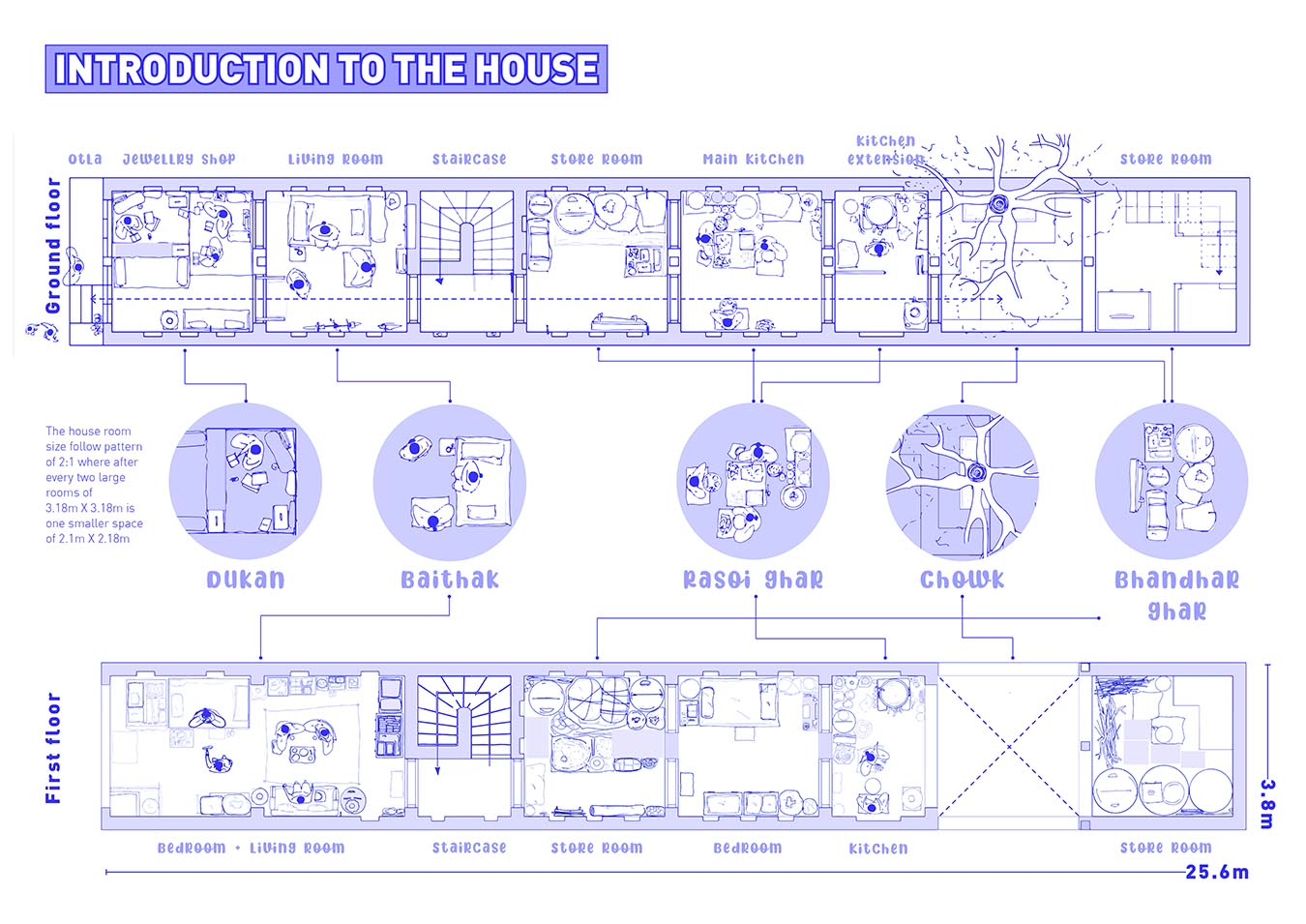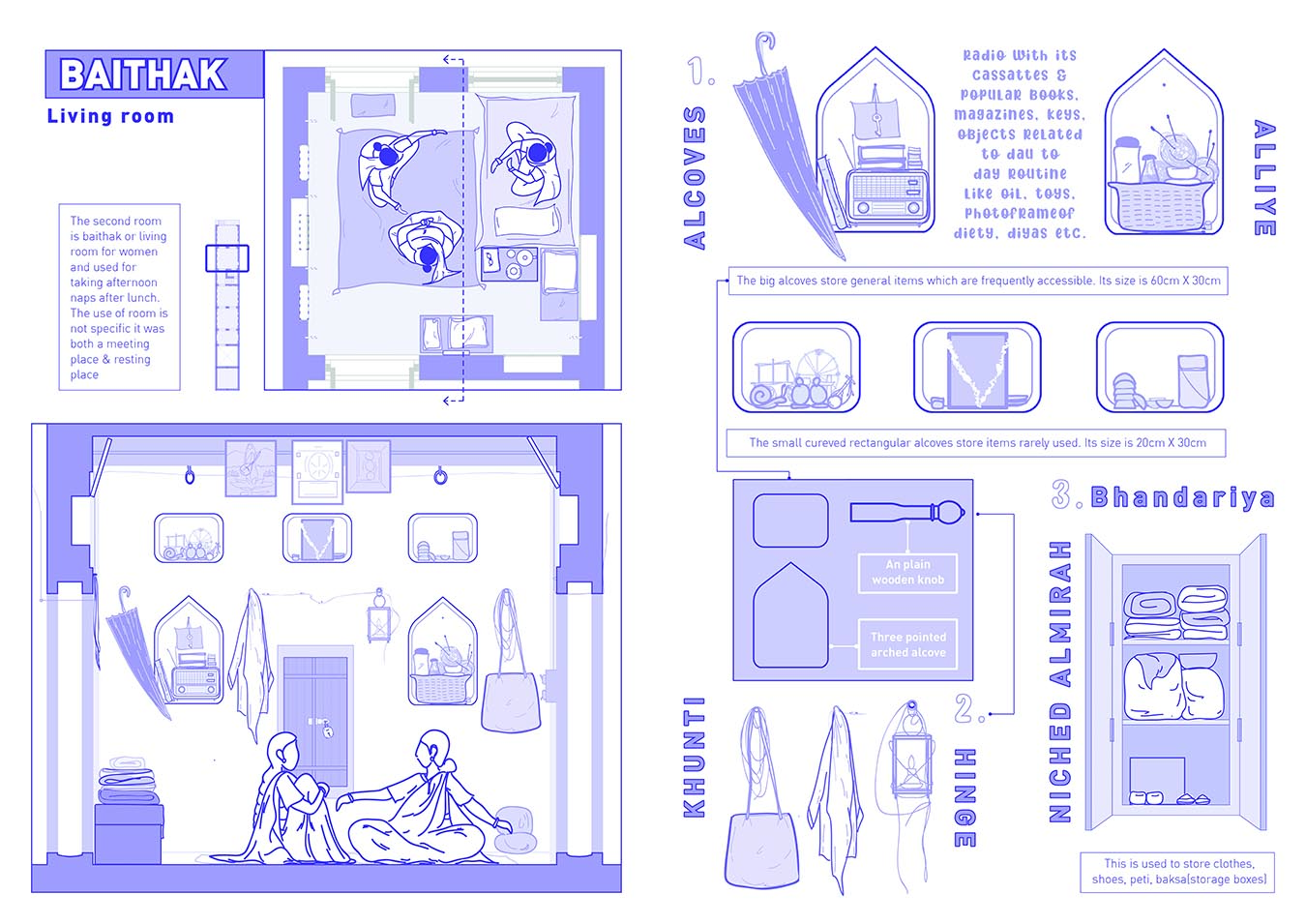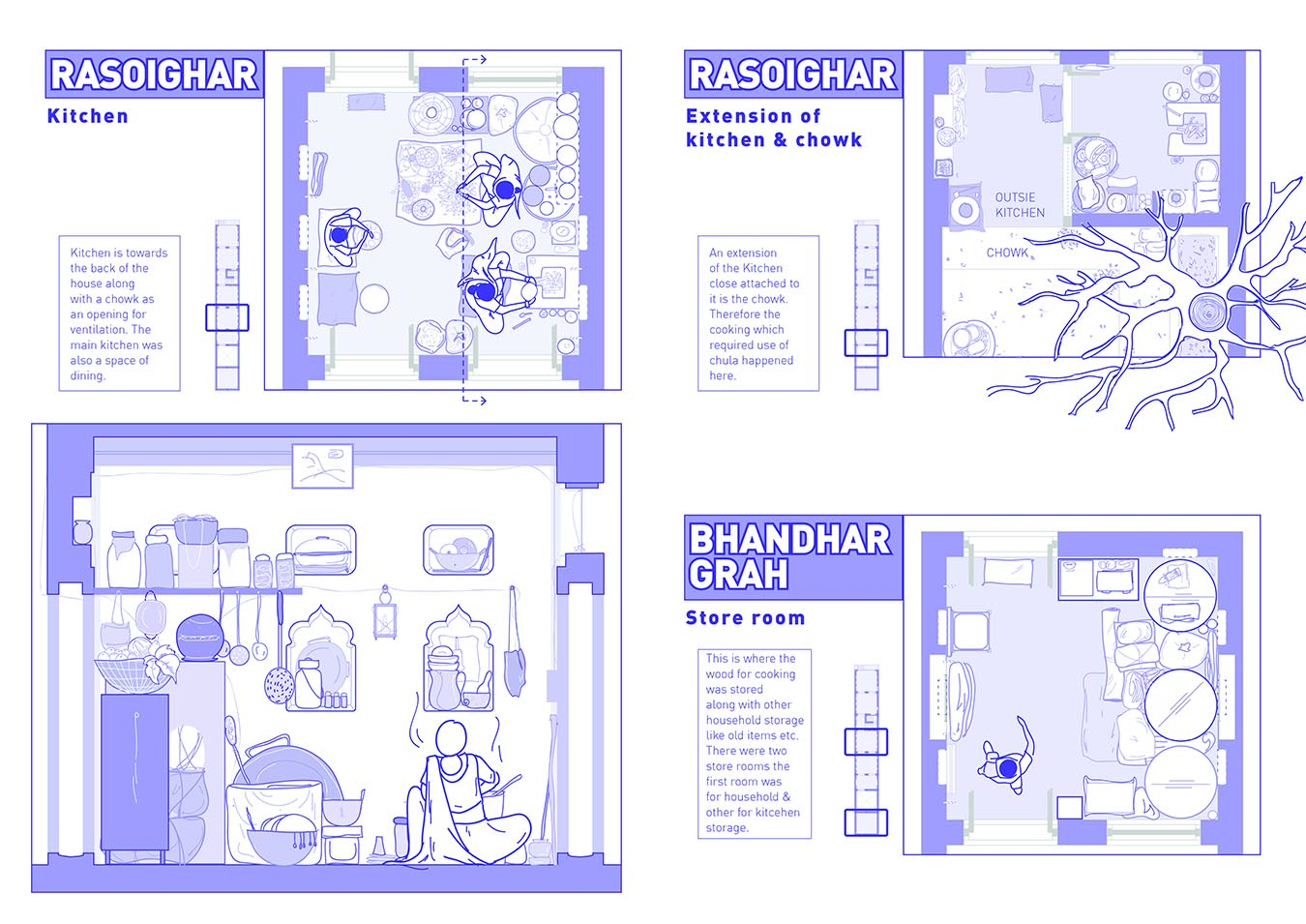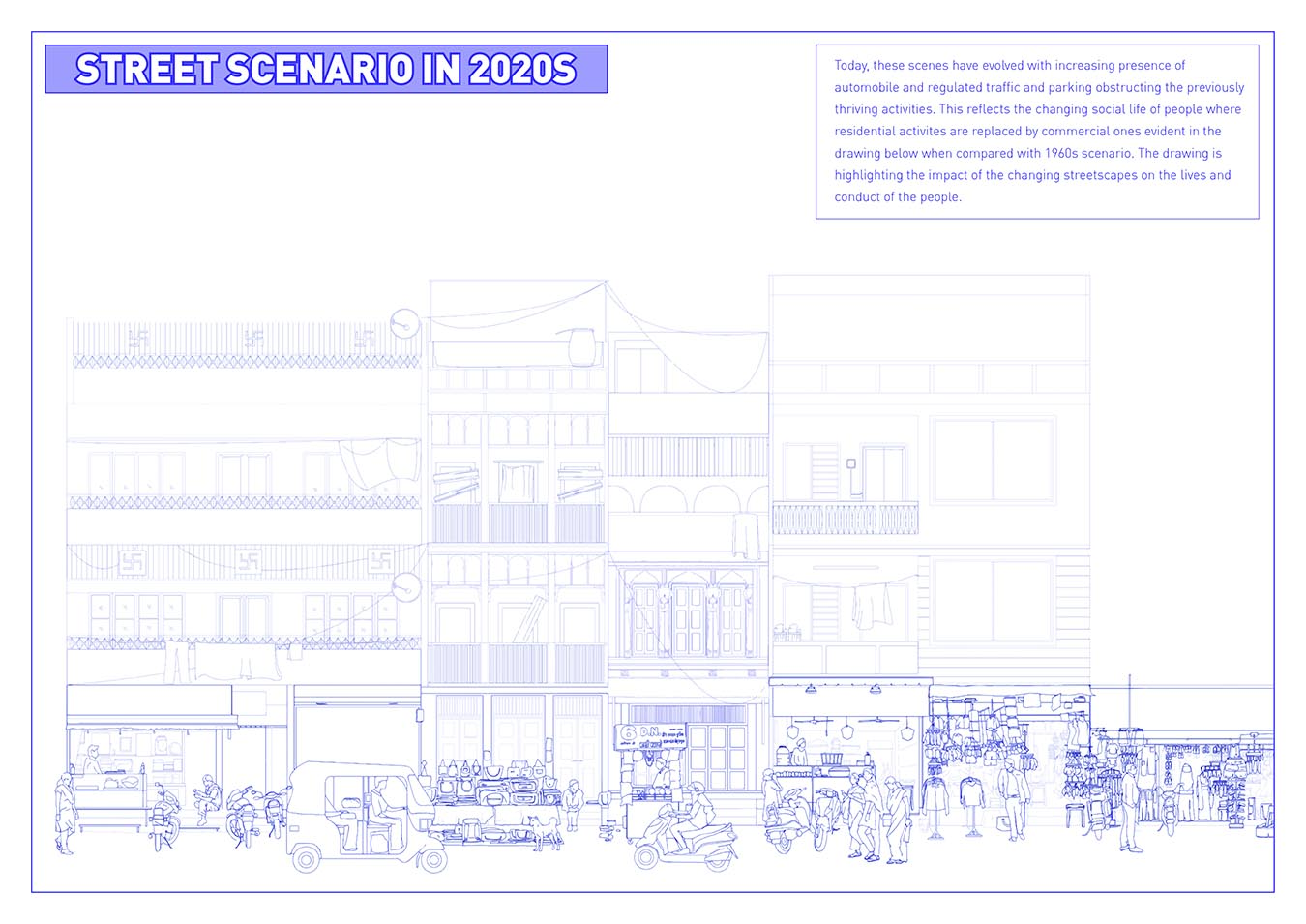Today, the core city area in Indore, also a heritage precinct, is significant to its historical and cultural identity. However, the last few decades have brought tremendous changes to the typical traditional houses that once made up the bulk of the city’s urban fabric. This transformation is particularly drastic in key streets and public areas, such as the Sarafa bazaar and Pipli bazaar, where most traditional houses have been appropriated or replaced with new structures. As of today, walking in these bazaars provokes a sense of loss, transformations that are estranged from the historical context. The new typologies create almost no-places, slowly wiping out old reference points or embedded memories. Instead of going into the defence of how the buildings and fabric should be conserved or evolve, the thesis wants to emphasise the stories of existing historic houses. It wants to make visible the usages, appropriations, degeneration and changes that are a part of the continuous evolution of the urban context. In doing so, it will actively contribute to the urban narrative that reflects the layers of history and may provide a new lens in shaping norms for heritage revitalisation. The research project uses architectural ethnography as a methodology for the study of the traditional house. Momoyo Kajima (2018) defines architectural ethnography as “to observe architecture and its environments from a behaviour logical point of view and always invent unique visual representations specific to the subject and scope at hand.” Taking forward this idea, this research will investigate through oral histories, archival materials and fieldwork, and learning through drawing to bring forth the many narratives of physical, social and intangible relations around traditional houses. The investigation’s output will culminate with producing a graphic novel where the information obtained through fieldwork will be synthesised in an order, precise and spatial way. This novel will make visible the inhabitants and their actions in a space usually overlooked by the traditional representation of architecture and urban design.
Drawing forgotten heritage architecture
-
Tags
Indore, Architectural Ethnography, Atelier Bow-Wow
Author: Shubhangi Saxena
Guide: Mansi Shah + Victor Cano-Ciborro
From an ethnographic perspective, the research studies a typical traditional house in Indore’s old city. It emphasises hidden dimensions of the ancient city’s forgotten heritage by highlighting its physical elements with stories of inhabitation and space productions.
Its objective is to:
_To uncover the material changes, physical transformations like usages and appropriations, and social transformations like people’s behaviour, inhabitation and lifestyle.
_To study the immaterial changes, intangible relations like spatial memories and associated stories are brought together in a graphic novel.
This thesis hypothesises the necessity of new representation to express the immaterial heritage, like memories or feelings of people or behaviours. Therefore, it uses the archive (interviews, memories of people, old photos) in a drawing that can graphically communicate every nuance of people’s lives within a space and element of a built environment. The conventional static and quantitative representation of architecture usually overlooks nuances.
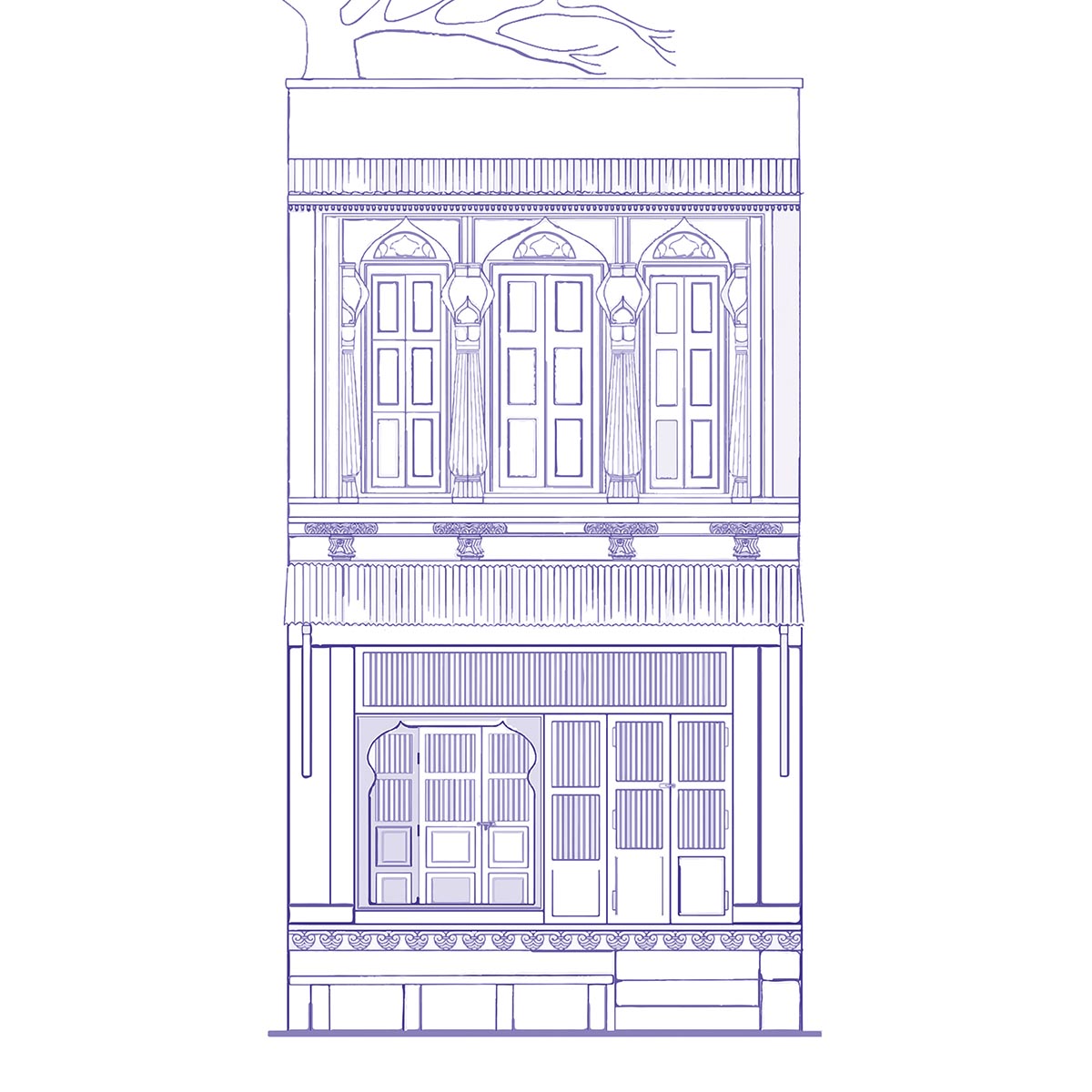
Conclusion
Recent decades in Indore’s old city have witnessed much newer development, resulting in a considerable loss of local heritage. Lack of planning and unregulated development has wiped out almost all traditional houses significantly in key street bazaars. The current development trends are bereft of traditional elements that were the soul of old city streets in the past. For example, the disappearance of ‘Otla’ as a building element has led to the disappearance of associated social activities. With a generous depth of traditional houses, otla is a crucial space and serves different purposes all through the day. Still, today this is absorbed by widened shop fronts or replaced by street parking resulting in congestion and overall loss of character. No norms related to plot amalgamation have led to large plot sizes and newer reconfiguration affecting the old city’s overall built morphology and character. Further, the lack of regulations related to building heights (incoherence to the character) or construction materials adds to the list of factors leading to estranged transformation.
These physical transformations have altered the built-edge and public realm’s synergetic integration and have impacted everyday social life and activities in these thresholds. Therefore, the thesis recognises the value in ethnographic studies where the architecture and urban space are read simultaneously to people’s behaviour, building elements, lifestyle, daily objects, dimension of time, emotions, etc., to bring forth those attributes that contribute to tangible and intangible cultural assets. The research uses the graphic novel to heighten the unseen dimensions of the traditionally built heritage- crucial to the narrative and connect with a larger audience. Through the research and building of this novel, it can significantly contribute in three ways:
1. Regulations for heritage core
This work can facilitate in considering and shaping regulations related to the heritage precinct of Indore, particularly with a focus on building heights, materials, chowk, plot amalgamation, otla as a social space, climatic response, frontage, etc. that ensure consonance in the built form and intangible attributes.
2. Finding relevance of ethnographic studies
Ethnographic studies can make visible, hidden stories, voices of the residents, intimate spatial situations beyond traditionalistic architectural productions to narrate personal experiences, lived spaces, and less known histories of Indoor-ian heritage. This is achieved through the concept of a novel where I got the liberty to draw scenes of people’s action in space along with the dimension of time, drawing their living environment like how people inhabited a house, where do they brush teeth or hang clothes, children playing around otla, spending time at night etc.
3. Addition to archives of Indore’s old city life
This study being the first one, can become an archive for Indore’s old city. At present, nothing beyond Geddes’ report speaks about the urban spaces of Indore’s old city, which this graphic novel can help become an essential path for being a reference towards reading spaces of the old city. I hope that this research can help awake the interest of people towards their local heritage. Also, graphic novel as a medium hold the significant potential of catering to a larger audience, more than the crowd of architects, planners for designers – like residents of Indore’s city to read and rebuild a sense of association with their traditional city.
About Shubhangi Saxena
She is an Urban Designer and Art Illustrator based in India. She graduated from CEPT University(2021) and has since been a teaching associate at various courses, including CEPT Foundation Program (2021-22), directly assisted the BUD Program Chair(2022-23), Urban Design Studio (2022) & its short courses as well as visual communication short course(2023). In addition to her teaching role, Shubhangi is a passionate art illustrator known for her art practice, Shilp kalaa, which explores the intersection of urban, landscape, and art. Her passion for art led her to pursue an MA in Visual Communication from the Royal College of Arts, London(2023).






